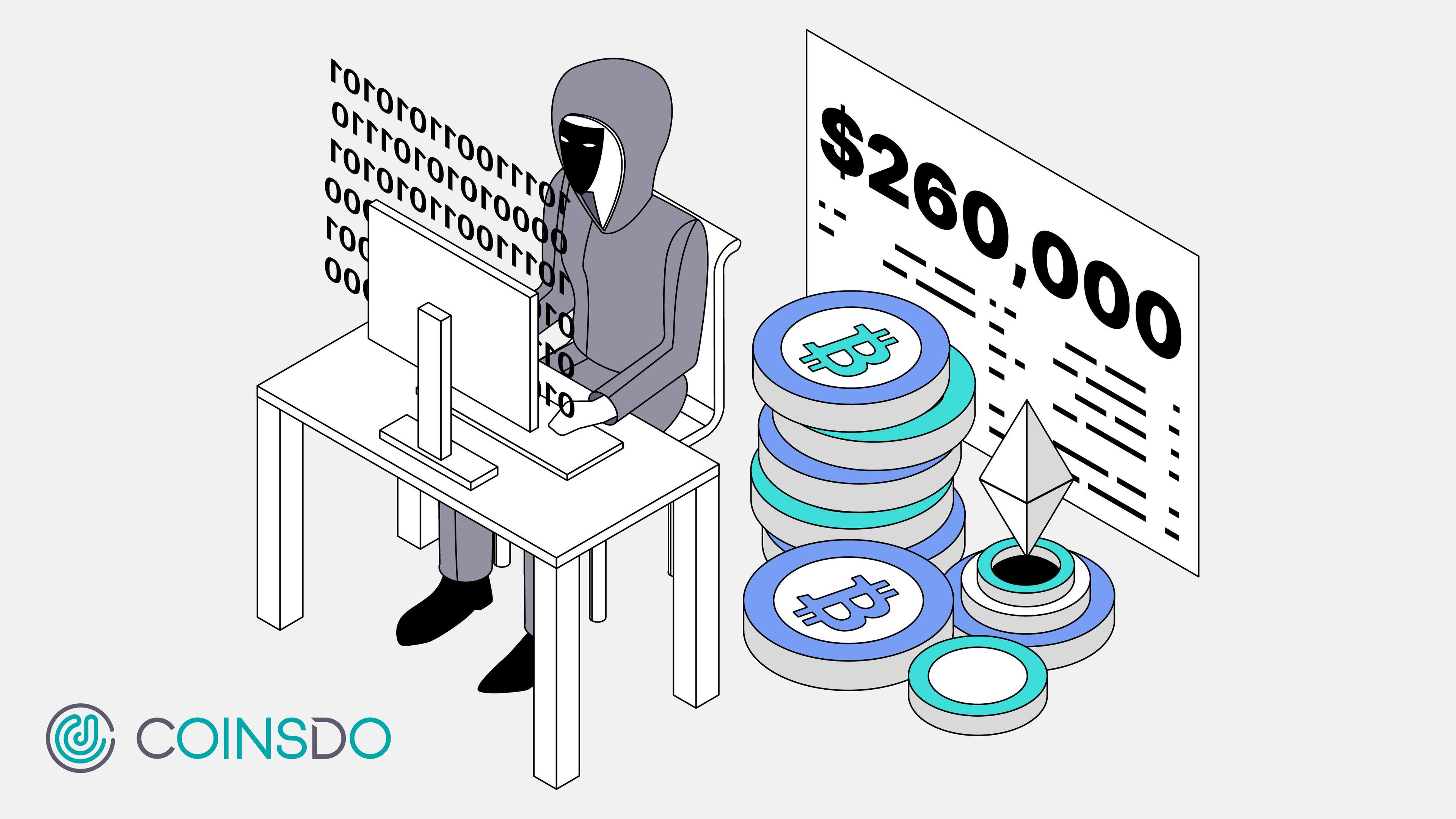
9 min read
Common Types of Crypto Scam and How to Avoid Them: Part 2
Welcome to part two of our series on cryptocurrency scams. In our previous installment, we delved into the world of fake ICOs, phishing etc. Today, we will cover a few more scams like fake USDTs, ponzi schemes, and pump-and-dumps, highlighting how these deceptive practices have evolved with the rise of cryptocurrencies and how you can better protect yourself.
Sending Fake USDTs
There’s a new type of scam involving fake USDT (Tether) tokens these days. These scams typically involve deceptive tactics where malicious actors convince users to manually add fake tokens to their wallets by providing a fraudulent contract address. This scam is executed through various social engineering techniques, often involving fake websites or apps that appear legitimate. Here are some red flags to watch out for:
Someone asks you to manually add a token using a contract address
Always verify the contract address on trusted platforms like CoinMarketCap before adding any tokens to your wallet. Verifying the authenticity of a token's contract address on CoinMarketCap helps ensure that you are not adding a fake token to your wallet. Additionally, if a token lacks an icon on blockchain explorers, this is another indicator of potential fraud, particularly for more well-known tokens.
Lack of verification on reputable platforms
Legitimate tokens will have their contract addresses and details verified on reputable platforms like CoinMarketCap. If a token's details cannot be verified on such platforms, it is a strong indicator of fraud. Always cross-check the token's information on multiple trusted sources to ensure its authenticity.
In 2024, fake representatives mimicking The Financial Commission (FINACOM) were caught distributing fake USDT to defraud consumers. Unfortunately, the victims were scammed twice. Initially, they are deceived by brokers who convince them to invest in fake tokens. Subsequently, a second layer of scammers posing as representatives from a fake Financial Commission (FINACOM) contacted the victims, promising to help recover their lost assets. These fake FINACOM agents ultimately provided the victims with more fake USDT, compounding their losses and making recovery even more challenging.
Ponzi and Pyramid Schemes
Ponzi and pyramid schemes have long been used to defraud investors, and with the rise of cryptocurrency, these deceptive practices have found a new arena to exploit. These schemes promise high returns with little to no risk, using funds from new participants to pay off earlier investors, creating an illusion of profitability. However, they are unsustainable and inevitably collapse, leading to significant financial losses for most participants.
A Ponzi scheme is an investment scam where returns are paid to earlier investors using the capital of newer investors rather than from profit earned. The scheme requires a constant influx of new investments to keep it afloat. As soon as the flow of new money stops, the scheme collapses, and most investors lose their money.
Pyramid schemes involve recruiting participants to make an initial investment and then recruit others to do the same. Each new recruit’s investment is used to pay those who recruited them, creating a pyramid structure. The scheme relies on a continual recruitment of new members to sustain itself. Like Ponzi schemes, pyramid schemes collapse when recruitment slows, leaving the majority of participants with losses. Here is how they operate:
Promise of Guaranteed Returns
Both Ponzi and pyramid schemes lure investors with the promise of high, guaranteed returns. They often claim to have exclusive investment strategies or technologies that ensure consistent profits, which are typically unrealistic and unsustainable. Legitimate investments come with risk and cannot guarantee high returns.
Heavy Emphasis on Recruiting New Participants
In pyramid schemes, the primary focus is on recruiting new members rather than selling a legitimate product or service. Participants are incentivized to bring in new investors, often with the promise of commissions or bonuses for each new recruit. Legitimate investments focus on the product or service, not on recruiting new participants.
Lack of a Legitimate Underlying Business Model
These schemes lack a genuine business model or product to generate profits. Instead, they rely entirely on the influx of new investments to fund payouts to earlier participants. If the investment opportunity lacks clear, transparent information about how profits are generated or if the details about the team and the business model are vague, it’s a sign of a potential scam.
One of the most notorious examples of a cryptocurrency Ponzi scheme is BitConnect. Launched in 2016, BitConnect promised investors substantial daily returns through its proprietary trading software, which it claimed could generate profits regardless of market conditions. The platform encouraged users to reinvest their earnings and recruit new members, offering referral bonuses as incentives.
BitConnect’s promises of high returns and aggressive recruitment tactics attracted a large number of investors. At its peak, BitConnect’s market capitalization exceeded $2.5 billion. However, in January 2018, the platform abruptly shut down after receiving cease-and-desist orders from regulatory authorities. The collapse revealed that BitConnect had no legitimate means of generating profits and was instead paying returns using the capital from new investors. The scheme’s downfall led to massive financial losses for many participants.
Pump and Dump Schemes
Pump and dump schemes are manipulative practices used to artificially inflate the price of a cryptocurrency through misleading statements, hype, and coordinated buying, only to sell off holdings at the peak, leaving other investors with losses. These schemes exploit the volatility of the cryptocurrency market and can lead to significant financial losses for unsuspecting investors.
Pump and dump schemes have been around for decades in traditional stock markets but have found a fertile ground in the relatively unregulated cryptocurrency space. These schemes involve orchestrated efforts to drive up the price of a specific cryptocurrency, often a low-market-cap coin, to attract unsuspecting investors. Once the price has been artificially inflated (pumped), the organizers sell off (dump) their holdings, causing the price to crash and leaving other investors with worthless assets.
The Mechanics of How These Schemes Work
Step 1: Coordination and Hype
Scammers often coordinate pump and dump schemes through private groups on social media platforms, messaging apps, or forums. They create a sense of urgency and excitement around a particular cryptocurrency, spreading positive but false information to attract investors.
Step 2: Artificial Price Inflation
The organizers begin by buying large amounts of the targeted cryptocurrency to drive up its price. This initial buying frenzy creates the illusion of increasing demand, encouraging others to invest out of fear of missing out (FOMO).
Step 3: Spreading False Information
To sustain the pump, scammers disseminate false or exaggerated claims about the cryptocurrency’s potential, upcoming partnerships, technological advancements, or endorsements. This misinformation is often spread through social media posts, forums, and even fake news articles.
Step 4: Dumping the Holdings
Once the price reaches a desired peak, the organizers sell off their holdings at the inflated prices. This sudden sell-off causes the price to plummet, leaving latecomers with significant losses as the market corrects itself.
In 2018, Verge (XVG) experienced a significant price surge fueled by a pump and dump scheme. Promoters hyped the coin with false claims about upcoming partnerships and technological advancements. Once the price peaked, the organizers sold off their holdings, leading to a sharp decline in value.
Final thoughts
Navigating the world of cryptocurrencies requires vigilance and a keen awareness of potential scams. Keep an eye out for the scams mentioned above to better protect yourself and your investments.
While a good crypto wallet won’t protect you from scams, it will protect you against hackers and other malicious actors! Do consider CoinWallet, an MPC-powered wallet designed to simplify and secure your crypto transactions. Click here (Android) or here (iOS) to download CoinWallet and take full control of your digital assets today!



